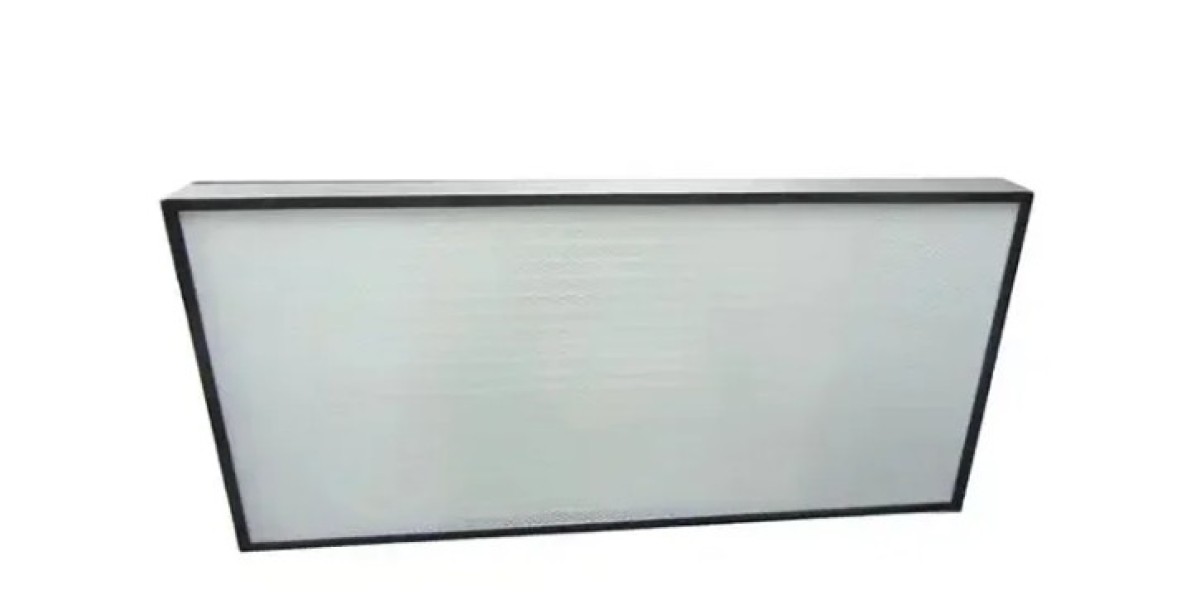Indoor air quality (IAQ) plays a crucial role in maintaining a healthy environment, especially in healthcare facilities where patients, staff, and visitors are susceptible to airborne contaminants. One effective solution to enhance IAQ is the use of ULPA (Ultra-Low Particulate Air) filters. In this article, we will explore how ULPA filters work and their significant impact on improving indoor air quality in healthcare facilities.
I. Understanding ULPA Filters
ULPA filters are highly efficient air filters that are designed to remove ultra-fine particles from the air. They are an advanced version of HEPA (High-Efficiency Particulate Air) filters, with even higher filtration efficiency. ULPA filters are capable of capturing particles as small as 0.1 microns with an efficiency of 99.9999%. This makes them ideal for healthcare facilities where maintaining a sterile and clean environment is of utmost importance.

II. Importance of Indoor Air Quality in Healthcare Facilities
A. Health Risks Associated with Poor IAQ
Poor indoor air quality in healthcare facilities can lead to various health risks. Contaminants such as bacteria, viruses, mold spores, and allergens can cause respiratory infections, allergies, asthma attacks, and other health complications. Patients with weakened immune systems are particularly vulnerable to these airborne contaminants.
B. Vulnerable Population in Healthcare Settings
Healthcare facilities cater to a diverse population, including patients with compromised immune systems, elderly individuals, and young children. These individuals are more susceptible to the adverse effects of poor indoor air quality. Maintaining a clean and healthy environment is crucial to prevent the spread of infections and ensure the well-being of patients, staff, and visitors.
III. How ULPA Filters Work
A. Filtration Mechanism
ULPA filters use a combination of three filtration mechanisms: interception, impaction, and diffusion. As air passes through the filter, particles are trapped by these mechanisms, preventing them from circulating in the indoor environment.
B. Efficiency and Particle Removal Capacity
ULPA filters have an efficiency rating of 99.9999%, meaning they can remove 99.9999% of particles as small as 0.1 microns. This high level of efficiency ensures that the air in healthcare facilities is free from harmful contaminants, providing a safe and clean environment for patients and staff.
IV. Benefits of ULPA Filters in Healthcare Facilities
A. Reduction of Airborne Pathogens
ULPA filters effectively capture and remove airborne pathogens such as bacteria and viruses. By reducing the concentration of these pathogens in the air, the risk of cross-contamination and the spread of infections is significantly minimized.
B. Control of Allergens and Irritants
ULPA filters are also highly effective in removing allergens and irritants from the air. This is particularly beneficial for patients and staff with allergies or respiratory conditions such as asthma, as it helps alleviate symptoms and improve overall respiratory health.
C. Minimization of Hospital-Acquired Infections (HAIs)
Hospital-acquired infections (HAIs) are a significant concern in healthcare facilities. ULPA filters play a crucial role in reducing the transmission of airborne pathogens, thus helping to minimize the occurrence of HAIs and improve patient outcomes.
D. Enhanced Respiratory Health for Patients and Staff
By removing harmful particles from the air, ULPA filters contribute to better respiratory health for both patients and healthcare workers. This leads to improved overall well-being, reduced absenteeism, and increased productivity among staff.

V. Applications of ULPA Filters in Healthcare Facilities
A. Operating Rooms and Sterile Environments
ULPA filters are essential in operating rooms and other sterile environments where maintaining a clean and sterile environment is critical. These filters help prevent the introduction of airborne contaminants during surgical procedures, reducing the risk of post-operative infections.
B. Isolation Rooms and Airborne Infection Control
In healthcare facilities, isolation rooms are used to prevent the spread of airborne infections. ULPA filters are installed in these rooms to ensure that the air is continuously filtered and free from pathogens, protecting both the isolated patient and healthcare workers.
C. Laboratories and Research Facilities
Research laboratories in healthcare facilities often deal with hazardous substances and biological agents. ULPA filters are crucial in these environments to prevent the release of harmful particles into the surrounding air, ensuring the safety of laboratory personnel and maintaining the integrity of research samples.
D. Patient Rooms and Waiting Areas
ULPA filters are also beneficial in patient rooms and waiting areas, where the concentration of airborne contaminants can be high. By continuously filtering the air, ULPA filters create a clean and comfortable environment for patients, staff, and visitors.
VI. Maintenance and Replacement of ULPA Filters
A. Regular Inspection and Cleaning
To ensure optimal performance, ULPA filters require regular inspection and cleaning. Accumulated particles can reduce the filter's efficiency, so it is essential to follow manufacturer guidelines for maintenance and cleaning procedures.
B. Filter Replacement Schedule
ULPA filters have a limited lifespan and need to be replaced periodically. The replacement schedule depends on factors such as the level of contamination, the volume of air being filtered, and the manufacturer's recommendations. Adhering to the recommended replacement schedule is crucial to maintain the filter's efficiency and ensure the continuous improvement of indoor air quality.
C. Importance of Proper Installation and Sealing
Proper installation and sealing of ULPA filters are essential to prevent air bypass and ensure that all the air passing through the system is effectively filtered. Any gaps or leaks can compromise the filter's efficiency and allow contaminants to enter the indoor environment.
VII. Compliance with Regulatory Standards
A. ULPA Filter Testing and Certification
ULPA filters undergo rigorous testing to ensure their efficiency and performance. Compliance with industry standards and certifications, such as those set by the Institute of Environmental Sciences and Technology (IEST), ensures that the filters meet the required filtration efficiency and particle removal capacity.
B. Adherence to Healthcare Facility Guidelines
Healthcare facilities must adhere to specific guidelines and regulations regarding indoor air quality. Compliance with these guidelines, such as those provided by organizations like the Centers for Disease Control and Prevention (CDC) and the World Health Organization (WHO), ensures that healthcare facilities maintain a safe and healthy environment for patients, staff, and visitors.

VIII. Case Studies: Successful Implementation of ULPA Filters in Healthcare Facilities
A. Reduction in Infection Rates
Several studies have demonstrated the positive impact of ULPA filters on reducing infection rates in healthcare facilities. By effectively removing airborne pathogens, ULPA filters contribute to a safer environment and improved patient outcomes.
B. Improved Patient Satisfaction and Staff Productivity
Clean and healthy indoor air has a direct impact on patient satisfaction and staff productivity. Healthcare facilities that have implemented ULPA filters have reported higher patient satisfaction scores and increased staff morale and productivity.
Conclusion
ULPA filters are a vital component in healthcare facilities to ensure clean and healthy indoor air. By effectively removing airborne pathogens, allergens, and irritants, ULPA filters contribute to reducing the risk of infections, improving respiratory health, and enhancing overall IAQ. Healthcare facilities must prioritize the installation, maintenance, and regular replacement of ULPA filters to create a safe environment for patients, staff, and visitors. By investing in ULPA filters, healthcare facilities can significantly improve indoor air quality and create a healthier environment for all.







